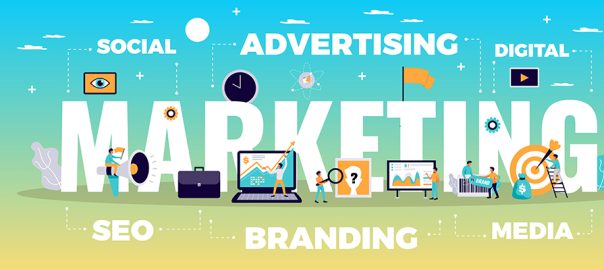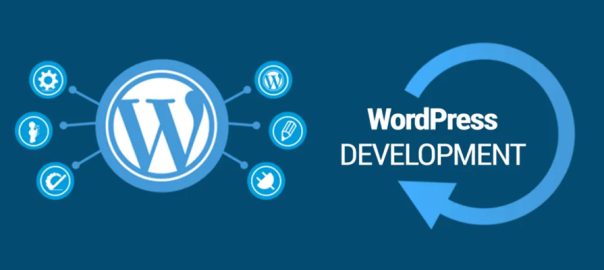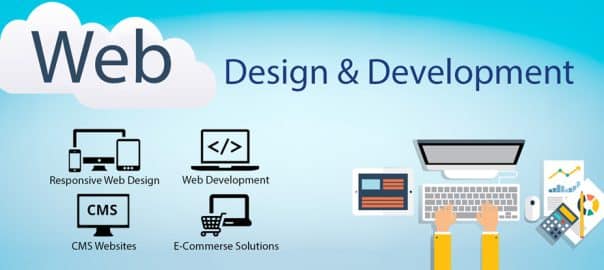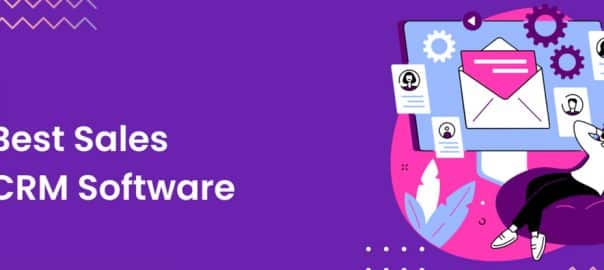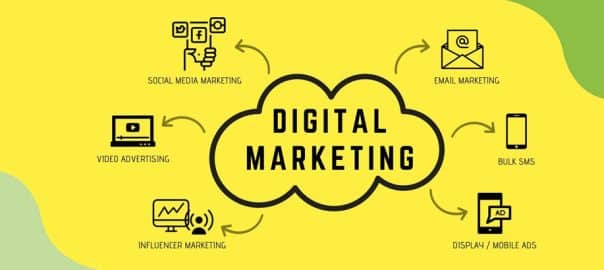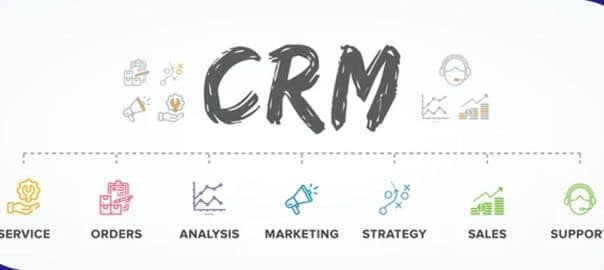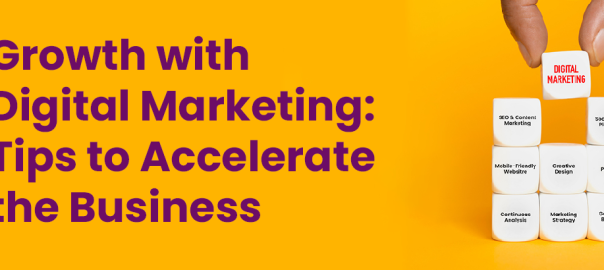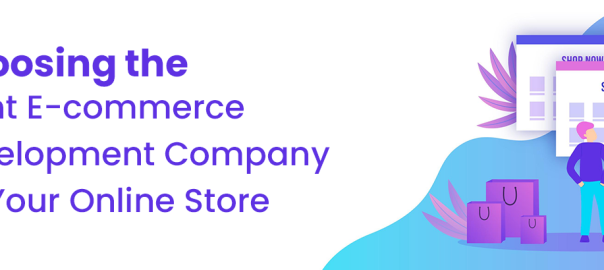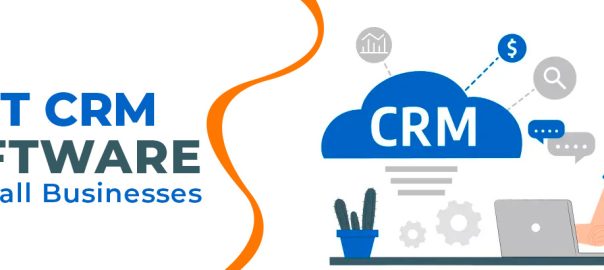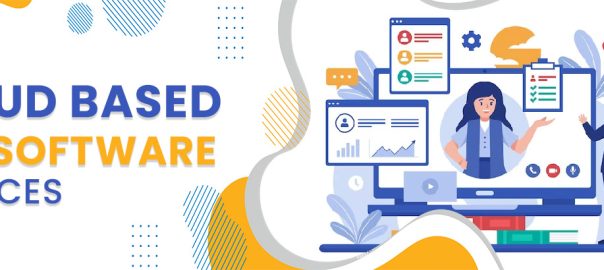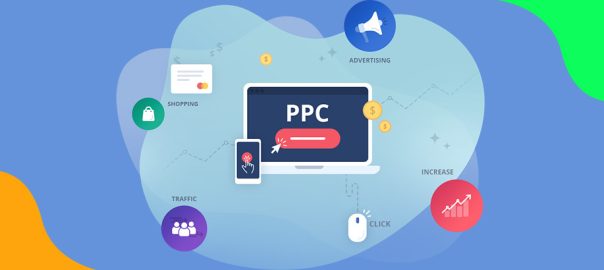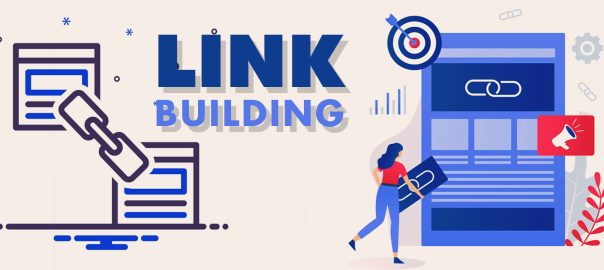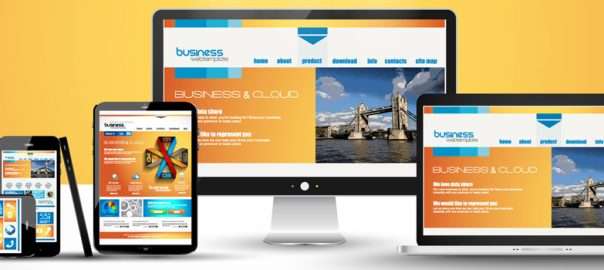Google My Business – What You Need to Know?
Every website owner these days is aware of the importance of Google. You just cannot avoid and survive in the digital landscape without Google. Since most of the desktop searches happen on Google, businesses need to optimise their presence on Google. That is why to optimise your presence on the internet; business owners need to work on Google My Business listing.
Google My Business listing is a free listing service offered by Google that allows your business to show up on Google Search and Maps. Hence, as a business owner, you need to take full advantage of Google My Business listings.
So, what is Google My Business listing, and why is it important for your business?
Let us dive deep into what you need to know about Google My Business listings – why do you need a Google My Business listing, how to get started, and how to verify your business.
Why do you need a Google My Business Listing?
If you have an online presence, there is no way you can avoid Google. And, when you know that Google is important to your business, it is better to play by the rules they set. It is in this context that Google My Business listing assumes significance.
It is, therefore, vital to understand why do you need a Google My Business listing.
Google has always set very high standards for its users, and want them to have the best search experience. That is why it allows businesses to create listings so that their users can get the relevant information without wasting time – you get the info without even opening the website. Also, if you want to serve local traffic for a service business, you can optimise Google My Business without even having a brick-and-mortar location.
Google My Business listing allows you to put out accurate information about your business, which includes your contact information and phone number. What you need to do is click on Google.com/Business and create an account for your business and put all the relevant information about your business. People who visit Google can view all the information you put out there when it throws up your result.
You might argue that you work hard on SEO, and your search engine presence is good enough, so why do you need to bother about managing your listings. But you will be surprised to know that businesses that verify their information through Google Business are perceived as reputable. It encourages people to call you up the moment they see you listed on Google because it reduces uncertainty about your business.
As mentioned earlier, with Google ruling the desktop search market, there is no way you can ignore Google listing. And, that is why you should always keep your information updated and current on Google listing. You need to understand that there is stiff competition in the business world, and many people are searching for a business like yours. If you keep your information current on Google, you might be able to beat the competition easily.
It is frustrating for business owners to search their details on Google Maps, and many find that they don’t have a strong presence on Google Maps. But when you are listed on Google My Business, you don’t have to worry about a strong presence because it helps you establish a rock-solid address. It becomes easier for your customers to find you when they are searching for a business in your niche.
Google Business Listing helps people find your business on Google Maps. Most people these days use their mobiles to search for a business on Google Maps. Hence, to optimise the experience of your mobile users, you should also consider listing your business on Google Maps. When you have an accurate Google Business Listing out there, it makes sure that your potential customers can contact you without any problem.
Google Business Listing also helps you in Local SEO. Local SEO is extremely important for businesses that want to increase their sales. You need to understand that local business search traffic is high-converting. Most people who search for local businesses tend to call a business or visit them personally in the next 24 hours. When you make sure that your phone number is listed on Google, you are sure to drive more traffic to your store.
Here is how Google Business Listing helps you:
You get to display the accurate records of your current number. With Google Business Listing, your potential customers can see your contact number.
Google doesn’t just display your phone number, but you also get to display your contact information to your potential customers. It is possible to link the correct map of your office address along with your office timings so that your potential customers can call you during office hours.
Google Business Listing also helps you to engage with your customers. You can read your customer’s reviews and respond to a few of them. It helps build trust with your potential customers who are seeing your reviews.
Also, you can add a photo to your business listing. Adding photos enhances trust and improves customer interaction. The number of calls coming to your office should see an uptick.
Google now allows you to create a short name/ URL for your business. It further enhances customer trust.
How to get started?
If you are new to Google My Business, here is how to get started:
You can start by visiting https://www.google.com/business, and then enter your business name. Tap yes on the location and enter your office address. In case you serve other areas (apart from your location), then enter those areas as well. Next, select your business category (or a category that is closest to your business), and then select the contact details you want to display. Enter your phone number and your website URL, then click on Finish to verify your account.
A few things that you need to keep in mind while setting up your account:
NAP – It is the name, address, and phone number of your business. You need to ensure that your NAP details remain similar across all listing sites like Yahoo, Bing, Yelp, and Yellow Pages online.
Put in accurate operating business hours so that your customers can call you when you are available. You can include special operating hours around holidays and special events, as Google My Business allows you to do so.
Select categories that suit your business or one that is closest to it. Try to be specific while choosing your primary category. Choose the Secondary category that is closest to your business so that it is easy for your potential customers to find you.
You can add a photo of your business as well. If you want your potential customers to have a sneak-peek about your business, you can add photos of your products and services to your Google My Business profile. Even your customers can contribute photos to your listing. In your listing, make sure to include your profile photo, logo image, cover photo, and other additional photos. Don’t forget to update your images regularly.
Google My Business also allows you to write posts. You can share your businesses’ special moments, promotions, events, products, and even more. In your post, you can add an image, a link, call-to-action, and text. The posts you add here are displayed in Google Search and Maps results.
In the search results, Google has made it easy to access your Google My Business dashboard. When you search your business by name and address, you can access your Google My Business dashboard where you make edits and see an overview of your listing.
Reviews are important for businesses, and you need to manage them carefully. Positive reviews instil trust among your potential customers, while negative reviews do the opposite. Make it a practice to request your customers to leave a review. Also, make it easy for your customers to leave a review. You can also incentivise review writing for your customers. But don’t forget to respond to those who send in their reviews.
Don’t forget to monitor Listing insights. Businesses need to know how their customers interact with their business listing. Google My Business insights allow you to get an overview of how your customers interact with your business listing. From the insights, you get to know how your customers find your listing, where your customers view your business on Google, what actions your customers take, and competitive insights in your niche.
Verifying your business
First up, it is important to understand that verifying your business is a vital step in opening up a Google Business account. Your listing will not be displayed if it is not verified.
There are numerous ways of verifying your Google Business account, and you can do it via phone, email, postcard, instantly, or in bulk.
If you are opening up a Google My Business profile that has a physical location, the best way of verifying your business would be via postcard.
Here are the three most simple ways how you can verify your business account:
Sign in to your Google Business account (if you have not already created an account, do so) and select a business to verify.
Recheck your details – business address, phone number, and email address. Make sure that all your particulars are correct and add a contact name so that Google can address it to you.
The last step is to choose a way how you would like to get your account verified. You can select any of the following ways to get your account verified:
You can do so by mail – In case you decide to get your account verified by mail, click the blue button that reads MAIL. Patiently wait for a postcard from Google, it can take up to five days. As soon as you get the postcard, log into your Google My Business account and select “Verify Now” and enter the verification code, which is a five-digit code. And, if by any chance, you don’t get a postcard from Google, you don’t need to panic because you can revisit your Google My Business account and request another code.
You can also verify your account by phone – Select “Verify by phone” if you want to verify your account by phone. But before you select the phone option, make sure that you have entered your correct phone number. You will get the verification code on your phone – enter the code to verify your account.
Also, you can verify your account by email – Select “Verify by email” if you want to verify your account by email. Go to your inbox, and check out the mail you have just received from Google. That email will have a verification button – click the button, and your account will be verified.
If you have a problem setting up your Google My Business account, you can get in touch with vStacks Infotech now. We are a digital marketing company, and we know what it takes to conquer the digital world. Also, you can contact us for a robust SEO and Local SEO strategy so that you can do well on Google.
Single Page Websites – Do They Work?
Regardless of where you operate, you need to have an effective online presence these days to do well in the world of business. To have an effective online presence, you need to have a website in place. Websites can be single-page websites or multi-page websites. Your business operations determine whether you need a single-page website or you require a multi-page website.
But do single page websites work?
Will it serve your purpose?
To find out whether they work or not, you need to understand a few things about website design. It will help you to make an informed decision. Let us, therefore, take you through the pros of a single-page website, content requirements, and pros of a multi-page website.
Pros of a single-page website
Of course, single page websites have some distinct advantages. Here are some of the pros of a single-page website:
Single-page websites create a better user engagement – If you have a single-page website, it can deliver your messages and call to action to your users quickly. When users have to engage with only one page, it becomes easier for them to interact with the call to action that is present on your website. Your users don’t have to search for contact forms or buttons linking to your social media, as everything is there on one single page. Also, with attention spans taking a substantial dip, your chances of increasing user engagement increase because they have to surf only a single page.
Single page websites are easy to navigate – When we talk about website design, navigation is an important aspect that needs your consideration. And, since one-page websites are simple, they are much easier to navigate. People tend to leave websites that are difficult to navigate. Your users don’t get lost as they can on a complex multi-page website. It becomes easier for your users to get what they want on a single-page website. A single-page website usually has a menu bar on the top, which makes it easier for the users to reach where they want to go. Easy navigation means, your users have a better user experience.
A single-page website is more mobile-friendly – These days, your SEO efforts can go for a toss if you don’t have a responsive website design. When there is only one page to view, it generally offers a better user experience, even if you have to scroll the page. For example, viewing a single-page website is like viewing any of the social media platforms on your phone. Hopping from one page to another on your mobile phone can be cumbersome at times.
A single-page website can be more visually appealing – Since images work well on a single-page website, you can make your website more visually appealing. With all your content on one single page, you have a better chance of adding numerous high-quality photos on it. Adding high-quality photos to your site not just makes it visually appealing, but it is also good for your SEO efforts.
A single-page website is more affordable to build and easy to maintain – It is not just more affordable to build and maintain a single-page website, but it is also less time-consuming. Creating a one-page website is more affordable, and you always have the option of expanding it as and when the need arises. Likewise, it is much easier to maintain a single-page website. Whether you have to fix, add, delete, or remove something, it is easy to do it if you have a single-page website because everything is there on one page.
A single-page website offers a better conversion rate – Single page websites offer better conversion rates because your entire traffic goes to one single place
Lack of content
You need high-quality and relevant content to make a mark in the online arena. After all, content is king. Lack of content on any website, be it a single-page website or a multi-page website, can frustrate your visitors. It is generally difficult to find relevant and specific content on a single-page website because there is not much space to create content for different topics. On a single-page website, it is not easy to explain topics in-depth due to a lack of space. And, if your visitors are looking for specific information, and it is not available on your website, it is bad for your SEO efforts
Another thing that you need to think about is the metadata of a single-page website. There is only one set of metadata in a single-page website, which means you only have one title tag and description. When there are no other pages on the website, you only have the option of a single title tag. It can limit your chances of attracting visitors to your website because you only get one shot to lure them. It also means that you can have only a limited amount of specialised content to display.
On the other hand, a multi-page website can have metadata for various pages it contains, which means you can increase the specialised content for your users.
Pros of a multi-page website
As mentioned earlier, your business needs should determine whether you need a single-page website or a multi-page website. Here are the main pros of a multi-page website:
Scalability – A multi-page website design gives you unlimited scalability options. You can create as many pages as you want and expand and improve the navigation system to suit your visitor’s needs. It means you have endless navigation options to explore and choose. The depth of your website would determine the type of navigation design you choose.
Easy to navigate – A multi-page website has an easy-to-follow navigation flow. Multi-page websites have been around for quite some time now, and most people are familiar with these website designs, so it is not a big deal for them to navigate such sites. Also, most visitors expect to find multiple pages on websites. Till the time the navigation flow of your website is easy to follow – you should not have any problem with a multi-page design.
Boosts your SEO efforts – If you have several pages on your website, it can surely boost your SEO efforts. With no bar on the number of pages, you can add as many relevant and specific content pages to your website as you want. Though how you fare on search engines will depend on your overall digital marketing strategy, having relevant content on your website is a good start. When you have high-quality and relevant content on your website, it is bound to improve your SEO efforts.
Whether you want a single-page website, or you are looking for a multi-page website, you should get in touch with vStacks Infotech now. We have been in the business of website designing for long, and we know what it takes to design a good, feature-rich, and functional website.
Tips To Increase Organic Traffic To Your Website
If you want to do well in the world of business, you need to have a website in place. But not all websites are doing well on the internet. If you want to do well in the online landscape, you need to make sure that your website ranks high on search engines so that you can attract the requisite traffic. If your website ranks lower in the search results, it is difficult to get the desired traffic.
So, what should you do to get the desired traffic?
There are two things you can do to increase the traffic – you either take the paid route or try to increase it organically.
Increasing traffic organically is the best way to get sustained traffic. You, of course, can opt for a pay-per-click campaign if you want instant results. But it is not possible to keep running a PPC campaign to get the requisite traffic. The cost you invest in advertising and the returns you get overtime will not make for a profitable model. Hence, it is crucial to invest your time and energy in activities that increase your organic traffic.
According to Brightedge, more than half (51%) of all website traffic comes from organic search.
And, more than 40% of revenue comes from organic traffic.
Yes, organic traffic is what your site needs if you want to do well on the online circuit. The best part is you don’t have to invest your money to increase organic traffic.
So, what should you do to keep getting visitors on your website?
There is a lot that you can do to increase organic traffic to your site.
But before getting into what you should do to increase organic traffic to your site, let us try and understand the meaning of organic traffic.
What is organic traffic?
According to Techopedia, “search engine traffic refers to the visitors who arrive at a website by clicking search results leading to that particular website. Using a Web analytics program, a website’s overall search engine traffic can be segmented to show the percentage of search engine traffic for individual Web pages or site sections. Search engine traffic is used to describe traffic that a site has not paid for, in contrast to paid search engine traffic, which results from people clicking through on a sponsored search result or ad. Search engine traffic is also known as organic search engine traffic.”
Organic traffic is the traffic that you get from search engines like Google, Yahoo, and Bing. The traffic comes to your site from unpaid resources because your website ranks high on these search engines.
Organic website traffic can deliver visitors that are specifically looking for services or products similar to what you offer.
9 techniques that can increase organic traffic to your site
As a marketer or website owner, it should be your endeavor to increase organic traffic to your website. Organic traffic to your site is bound to increase if you rank on the first page of Google, and the traffic can exponentially increase if you rank in the top three positions or the featured snippet for a particular keyword.
Here are nine techniques that can help you increase organic traffic to your website:
- Don’t just optimize for search engines, instead optimize for your target audience – You need to know for whom you are writing your content. Try and create educational and informative content that resonates well with your buyers, which helps improve your SEO. You need to address the issues of your buyers and know the keywords they use in search queries. If you optimize only for search engines, it is not going to help you much.
- Make sure you use longtail keywords – Don’t just run after the most popular keywords in your market. It is important to use keywords that are relevant and specific to your products or services. Search engines like Google will identify your site or blog in due course, helping you climb the search rankings, and it will become easier for your customers to find you.
- Pay attention to blogging – If you want to increase your organic traffic, you cannot avoid blogging. It is the best way of increasing your organic traffic. It allows you to create relevant and meaningful content for your target audience. But make sure that your blogs are nicely written, informative, and original, which adds value to your audience.
- Connect to others on the blogging arena – It is important for you to read, comment, and link to other websites and blogs in your niche so that they can do the same for your content. It can increase and attract more prospects.
- Make sure you create high-quality content consistently – You need to write and publish high-quality content regularly and consistently. The more you produce high-quality content for your website or blog, more are the chances of attracting organic traffic.
- Work on your meta title, URL, and description – If you want to optimize your web page or blog post effectively, you need to work on the meta title, URL, and description. Make sure you convey your message clearly so that search engines can pick your content for specific searches. Also, ensure that you work on all your pages to optimize them properly.
- It is important to use internal links – It is necessary to create internal links. When you write blogs, you should always use internal links so that you can take your prospects to more relevant content present on your website. Creating internal links will help you keep your prospects on your site for a longer duration, which, in turn, can also improve your search engine rankings. But ensure that you don’t overdo internal linking.
- External links are also important – If you want to improve your rankings on Google, you need to ensure that your content has adequate external links from trustworthy and reliable sites. Google prioritizes websites that have external links. Connect to people in your niche, and ask them to connect to your site. Also, encourage your clients, friends, suppliers, and vendors to link to your site.
- You should use social media and exploit Google Analytics – You should use social media networks like Facebook, LinkedIn, Twitter, etc. to build your reputation on the internet. You can add a share button on your content so that your content can be shared extensively. But make sure that your content is worthy of sharing. Also, you should use Google Analytics to track your visitors. From Google Analytics, you can get to know where your prospects come from and the keywords they use. You can fine-tune your content strategy accordingly.
If you want to know more about how to increase traffic organically, you should get in touch with vStacks Infotech. We are a digital marketing company, and we know how to create a robust SEO strategy for your website. A robust SEO strategy, coupled with social media marketing, can ensure that you keep getting traffic organically.
Digital Marketing Agency
A digital marketing agency employs subject matter experts in every field. That is why a digital marketing agency is capable of formulating a robust and smart online marketing strategy. Let us, therefore, take you through what you should do to select the best digital marketing agency for your business. But before that, let us briefly explain what digital marketing agencies can do for your business.
What digital marketing agencies can do for your business?
Reliable digital marketing agencies can help you reach your ideal customers by leveraging the correct techniques. Here is what a competent digital marketing company can do for you:
Market research – It is extremely important to know your market. Any reputed company will first invest sometime in researching your market.
SEO – It is one of the most crucial aspects of digital marketing. If you are looking at long-term success, you need to get your SEO strategy right. A reliable agency can formulate an effective SEO strategy so that you can start to rank higher on search engines like Google.
Google Ads – It is a targeted form of marketing where you can expect to get instant results. But it is crucial to run the campaign properly.
Video advertising – A lot of your customers are on YouTube. For a successful online journey, you need to tap this segment as well. Moreover, you need to know that video consumption is the rise, and you should not ignore this channel.
Facebook advertising – Facebook advertising can give you great results. Running a PPC campaign on Facebook can improve your ROI. You can target your customers by gender, education level, income, interest, location, status updates, etc.
Content marketing – It is one of the most critical aspects of online marketing. There is a lot that these agencies can do for you in this segment.
Mobile marketing – With mobile searches on the rise, you cannot leave out this segment. A reliable online marketing agency will help tap this segment properly.
Email marketing – This is an important form of marketing and can give you great results if you do it the right way.
Web design – A fully equipped online marketing agency will surely offer you suggestions on how to improve your web design.
How to select the best digital marketing agency in Noida?
Whether you do your business from Florida, Manchester, or the Delhi-NCR region, it is crucial to know how to select the best online marketing agency for your business. Here is what you need to do to get the best one for your marketing:
Know your goal
It is crucial to assess your needs first. You need to know what you want to achieve. It becomes easier for you to select the best online marketing agency for your business if you know your goals. Hence, to start with, make sure you identify your digital marketing goals.
Do your homework properly
When you set out to hire an online marketing agency, make sure you do your homework properly. The first thing that you should do is check out their website. The agency that is going to sell your products must be selling their products as well. Visiting their website would give you a fair bit of idea about how they sell their products. Any reputed online marketing agency in the market will have an easy-to-use website, its load speed will be fast, and its website will provide a wealth of information. If they tick all these check
boxes, you can ask them to share their keywords ranking stats. If the keyword ranks are encouraging, you can be sure that they are good at SEO as well. You can consider hiring an agency that is doing good on all these fronts.
Look at a long-term relationship
Digital marketing is not like app or website development. It takes time to deliver the desired results. Digital marketing is quantifiable. You can get to see the progress. But that does not mean that you will get results overnight. You should always prepare for a long-term relationship.
Don’t overlook the process they follow
The agency you hire should not have any problem in formulating a custom program of digital marketing strategies to suit your needs and goals.
You also need to find out the techniques and methods the agency would use to become an expert in your industry.
It is also crucial to find out what process they follow to achieve tangible results for their clients.
Find out how they plan to improve your search engine rankings for some of your important keywords.
Also, find out if they can create quality content for your website.
It is also crucial to try and understand how the agency will propagate your message to your audience and track your results.
You also need to know how the agency will use data analytics to generate new leads for your business.
Find out if they will assign a dedicated support team
Communication is the key. It is important to have open and frank communication with the agency you are planning to hire. If the agency assigns a dedicated team (or person) to deal with you on a day-to-day basis, then it becomes easier for you to communicate with the agency. A dedicated person can also help you understand the nuances of digital marketing in case you need help there.
Try to figure out what do they have in their toolbox
It is important to know the platforms the agency will use to deliver the results. The agency you hire should know how to use key tools to propel your online journey in the right direction. Some of the tools your agency should be familiar with include Google Analytics, Moz, Marketo, MailChimp, Hubspot, Screaming Frog, Sprout Social, Salesforce, and Constant Contact.
Always check out the services they can offer
It is crucial to hire an agency that can offer you a range of services. It is difficult to deal with multiple agencies. When you can get agencies that can take complete charge of all your digital marketing needs, what is the point in hiring multiple agencies. Hence, always make sure that the agency you hire should offer you a range of online services so that you just have to deal with one and not multiple agencies.
Don’t overlook experience
It is vital to hire someone who has a proven track record. It is not advisable to overlook experience. Talk to them about their previous work. Look at their portfolio. It is difficult to rely on someone who is a novice. If the agency you hire has delivered good results in the past, there is no reason why you shouldn’t hire them.
And, one question that you need to ask the prospective agency is this – is it possible for you to identify and highlight my uniqueness so that I can get over my competition?
Finally, don’t forget that value is more important than price
The cost, of course, is important to businesses of all sizes, but it should not be the only consideration. Don’t run after the agency who offers you the cheapest rates. You also need to worry about the value you are going to get in return. There should always be a balance between quality and price.
If you are based out of the Delhi-NCR region and are looking for a reliable digital marketing agency in Noida, you should get in touch with vStacks Infotech now. We are a full-service digital marketing company, and we know what it takes to make your business more visible online. We have the experience, expertise, and exposure to deliver the results you desire.
E-Learning App Development
An eLearning app helps connect students or employees with an institution or office through an LMS. With an eLearning app, you can deploy scheduled courses and tests per the assigned curricula.
Let us, therefore, take you through what you need to look for in a reliable eLearning app development company. But before getting there, let us try to understand the benefits of using an eLearning app.
Benefits of using an eLearning app
An eLearning app offers a lot of advantages, both to the learner as well as the teacher. here are some of the advantages of an eLearning app:
- It makes learning more interesting and engaging.
- It improves learner-teacher communication.
- It makes learning fun.
- Also, learners can access the course content from anywhere and at any time.
- It personalizes the learning experience.
- It makes access to information (read course content) quick and easy.
- It helps you save time and money.
What to look for in an eLearning app development company
Your eLearning app is an important tool. And, if you want your tool to give you the desired results, you need to make sure that you don’t compromise on its quality. To get a top-quality eLearning app, you need to ensure that you hire an app development carefully.
Here is a checklist that you must follow when you plan to engage an app development company:
Experience and expertise – The experience and expertise of the eLearning app development company would determine the quality of your app. Without the necessary experience and expertise, it is difficult to deliver on the quality. The company you hire should have prior experience in developing similar apps. Also, they should have skilled developers working on your project so that you get the best app for your organisation.
To get a reliable company for your business, do some research on the internet, visit their websites to find out more about them, and check out references.
Affordability – Pricing is crucial to businesses, both big and small. You, of course, cannot ignore your budget. However, when it comes to pricing, you need to understand that you cannot compromise on the quality. Mostly, inexperienced app developing companies offer low prices to attract new customers.
It is crucial to understand that it can become a futile exercise if you don’t get a high-quality eLearning app for your business. Hence, make sure that you don’t compromise quality over price.
Portfolio – It is crucial to go through the portfolio of the company you are planning to engage in developing your app. You need to know what they have done in the past to gauge what they can do for you. Don’t forget to check the user-interface, operationality, and features of the apps they have developed in the past to understand their work.
Portfolio assessment gives you a fair bit of idea whether their app development is easy to use and simple or not, and how they fare on the functionality front. Portfolio assessment is a crucial step in selecting the best company for your business; hence, never take it lightly.
Communication – It is crucial to understand that the company you plan to hire must communicate with you properly and effectively. You need to have a detailed discussion with the developer who is planning to work on your app. Unless the developer understands your business, it is difficult to develop a product that suits your requirements. Once the developer understands your business, only then can he or she develop the relevant features in your app.
Look for an established company or group – When you hire an established company, you can rest assured that they will remain in the market to provide you all the support even after the development of the app is complete. There are occasions when you need their support, especially when you need to upgrade your app, or when there are technical glitches. That is why hiring freelancers or newbies can prove to be a mistake.
Hence, make sure you hire a company that has a good standing in the market.
Timeline – It is important to hire a company that sticks to strict timelines. You cannot wait endlessly for the app to develop. You have different tasks to attend to, and that is why you need a responsible company.
Maintenance and upgrade – App development work might end once you launch your app, but there are other technical aspects that you need to consider. You need someone to maintain your app. You will also need someone if there are glitches in your app. Also, you might need to upgrade your app from time to time. Hence, ensure that the app development company you hire is ready to give you all the support when you need it the most.
If you are looking for a reliable eLearning app development company, you should get in touch with vStacks Infotech. We have been in the software development business for more than twenty years, and we know what it takes to develop a functional, feature-rich, sustainable, and affordable app. We stick to the timeline we commit and offer the required maintenance and support to all our customers. Our apps are easy to use, intuitive, and user-friendly.
Optimising Your E-commerce Opportunities
From reputed online stores to startups, one thing that matters the most to e-commerce business is the conversion rate. And, if you are not converting all of your clients, there is always room for improvement. Converting all your customers is a near-impossible task, which means you need to do something to improve your conversion rates.
So, what is it that you should do to optimize your e-commerce store?
There are numerous aspects to optimizing your e-commerce site. And, unless you optimize your site the right way, it is very difficult to increase your conversions and sales.
To optimize your e-commerce conversions, here is what you need to do. But before getting into what you need to do to optimize your e-commerce site, let us take you through what is a good conversion rate.
What is a good conversion rate?
What does conversion mean?
When someone saves an item to buy later, adds an item to their shopping cart, or makes a purchase, it means you have made a conversion. To be more precise, among those who visit your site, the percentage of those who take action on your page is what is known as the conversion rate.
According to Monetate, the global average e-commerce conversion rate stands at 2.86% (as of Q2 – 2018).
The average e-commerce conversion rate in the US is 2.63%, and that for the UK is 4.31%.
When it comes to conversion rates, you need to understand that conversion rate is highly contextual. For example, a store selling high-value electronic goods is bound to have a low conversion rate from a store which sells t-shirts at one pound.
So, what impacts conversion rates?
Some of the things that impact conversion rates include product type, average order value or the cost of the product, traffic source, location, platform (Windows, Mac, Android, IOS, etc.), and device type (desktop, tablet, mobile).
You can find your site’s e-commerce conversion rate on Google Analytics and set for yourself tangible goals to improve it. And, to improve your conversion rates, here are some e-commerce optimization techniques that help you achieve your goals.
How to optimize your e-commerce opportunities?
If you are the owner of an e-commerce store, your primary aim should be to increase your conversion rates. And, to do it the right way, here is what you need to do to optimize your e-commerce opportunities:
You should improve your product pages – You need to make sure that your product pages are up to the mark. It should convince your buyers to buy the product from your site. Make it easy for your shoppers to navigate your site so that they can find the product they want to buy. According to the Baymard Institute study, you should use two types of breadcrumbs for your e-commerce site, namely, history-based and hierarchy-based breadcrumbs. Breadcrumbs link shows a visitor where you are in a store, which is displayed at the top of your product’s catalogue.
You can also improve your product pages by using catchy SEO friendly titles for your products.
You also need to lay a lot of emphasis on product images. Make sure that you show the product from different angles so that it helps the buyers close the sales quickly.
You should also add product videos to help your buyers get more clarity about the products on display.
Also, make sure your product descriptions are concise, crisp, to the point, and clear.
It is important to use personalization – It is vital for the businesses in the e-commerce vertical to personalize their offers, content, and make them more relevant for their buyers. With the data you collect from the web and social analytics, you can personalize your offers because you get to know what your visitors like, who they are, and what they want, and where they have been on your site. When it comes to e-commerce personalization, make sure you follow the following tips:
You should always be relevant, smart, and targeted.
Highlight the related products.
Personalize site navigation based on your visitor’s interest.
Also, based on behavior, personalize your email marketing campaigns.
Make sure you show discounts by category.
Announcing flash sales is another option to optimize your conversions – Many people love to buy when they see the four-letter word SALE. When you let your customers know that they stand to gain if they buy during the sale period, it creates a sense of urgency. People tend to buy because they don’t want to lose an opportunity, and therefore, it increases your conversions. Hence, it is vital for your e-commerce business to use flash sales to improve your opportunities.
You also need to optimize your pricing – You need to make sure that your pricing is right, or else it is difficult for your buyers to buy from you. Here are some ways of getting your pricing right:
Compare your products
Add a clear call to action
Don’t give too many options
Entice your users by using charm pricing (for example, .99 or 1.99)
You can also use live chat to clarify your buyer’s doubts
All of this will help you optimize your opportunities.
You should try to reduce cart abandonment – Cart abandonment is one of the most significant issues which you need to address. According to the Baymard Institute, the average cart abandonment rate is 69%. But you surely want to improve your cart abandonment rate. And, to do that, here are some tips which you should follow:
Don’t surprise your buyers when they are about to check out, especially on the cost front. Most of the buyers leave the cart due to shipping or other cost surprises. If possible, you can offer free shipping.
Always have multiple payment options. You need to ensure that no one abandons the cart because of the lack of payment options.
Make sure that you keep a visible cart. You can have a cart icon on all your pages.
You should also offer guest checkouts.
Also, send cart abandonment emails.
And finally, offer a coupon.
Make sure that you optimize your site for mobile – With the rise in smartphones all over the world, you can’t ignore mobile optimization for your e-commerce site. People these days have a habit of researching products and services on their mobile. To optimize your mobile conversion rates, here are some tips:
Make sure that the load speed of your site on mobile is excellent.
Use videos because most people watch videos on their mobile.
Also, optimize for mobile search.
You should also use mobile marketing campaigns.
Pay attention to email marketing – Email marketing is one of the best ways to build a relationship with your customers. Email marketing offers the best ROI, which means more conversions. Some tip that can make your email marketing more effective:
Always have a catchy subject line
Make sure you personalise your email.
Target your audience on special occasions and holidays (holiday season and occasions like Valentine’s Day, Memorial Day, Back to school, etc.).
Always use transactional emails.
Automate your email marketing.
Don’t forget upselling – If you want to increase your e-commerce conversions, you should pay a lot of attention to upselling. If your visitors are interested in buying a product, you should encourage them to buy a more expensive item. You can upsell on your product page, during the checkout process, or after the checkout. You should also upsell your products to your existing customers. It is important for you to let your customers know why they stand to gain if they upgrade to an expensive item. You also need to ensure that you always get your pricing right.
Don’t forget to take the feedback of your customers – Customer feedback is extremely important, never ignore it. It is the only way to know whether your customers are happy with you or not. When you get customer feedback, you know where you need to improve.
If you want to learn more about optimizing your e-commerce opportunities, you should get in touch with vStacks Infotech now. Being a digital marketing company, we can help your business reach new heights.
CRM Software Development Company
Let us, therefore, take you through what you need to do to select the best CRM software development company for your business. But before getting there, let us try to throw some light on what is a CRM and the benefits of using a CRM solution.
What is CRM software?
CRM or customer relationship management software is a tool that helps businesses manage customer relationships efficiently and effectively. It enhances the customer relationship by tracking leads, managing customer interactions, and streamlining your business processes. In addition to managing partner relationships, it also helps businesses to manage employees and vendors.
Benefits of using CRM software
A CRM solution helps you in many ways. Here are some of the main benefits of using a CRM system:
A CRM system helps you improve your customer service.
CRM software helps you discover new customers.
A CRM system helps improve customer revenues.
CRM software can become your sales team’s most trusted tool. It helps them close deals faster.
A CRM system helps your team members to cross-sell and upsell.
CRM software streamlines your sales and marketing processes.
A CRM system can make your employees more productive and increase your revenues.
CRM software helps improve customer loyalty.
A CRM system helps improve internal communication.
CRM software helps you to optimize your marketing efforts.
How to select the best CRM software development company for your company?
Customer management is the single most important thing for businesses in all the sectors. And, to manage your customers efficiently and effectively, you need a CRM system. However, since all CRMs are not the same, you need to make sure that you select the best CRM for your business. To select the best CRM for your business, here is what you need to do:
Decide on what you want – cloud CRM or on-premise CRM – The first thing that you need to decide on is this – do you want a cloud CRM or are you looking for an on-premise CRM. Opting for an on-premise CRM means, you need to buy the license, software, and hardware and maintain an IT team to keep the system running. But in case if you opt for a cloud-based CRM solution, you don’t need any upfront investment. You just have to get into an agreement with the CRM vendor and start using the solution.
Make sure you get all the features and functionalities you want – Some features like contact management and lead management are common in all the CRMs. But some CRMs offer advanced features like integration and analysis. Hence, it is vital to know what features you want. Once you know what you want, make sure that you get all the features that affect your business. Buying a half-cooked dish is never a good idea.
Ensure that the CRM you buy is easy to use – The CRM you choose should be easy to use. There is no point in buying a CRM that is difficult to use. If your employees are unable to use the CRM, what is the use of buying a CRM in the first place? Hence, ensure that the CRM you purchase should be user-friendly where navigation is not an issue.
Don’t forget about integration – It is crucial for the CRM system you buy to integrate well with your existing applications. You, of course, cannot change all your existing applications just to fit in a new application. For example, your CRM system should seamlessly integrate with your existing ERP, HR, and/ or accounting software. Hence, always buy a CRM solution that integrates well with your existing applications.
Find out about customization and training – Another vital thing is customization and training. Before you commit yourself, do find out if the vendor can customize its solution to suit your needs. Also, find out whether they are ready to provide the requisite training to your employees. Every organization has its own unique needs. That is why you need customization. And, without proper training, it is difficult for your employees to use the system seamlessly.
Make sure your CRM is mobile-capable – It is extremely crucial these days to buy a CRM that offers mobile capability. If your CRM is not mobile-capable, it is not of much use to your sales team because they need to access the data when they are out in the field. Hence, make sure that the CRM system you buy offers mobile capability.
Ask for a demo and free-trial before you buy the CRM – There are claims and counterclaims in the market. Don’t take anybody’s word as gospel truth. Hence, the moment you shortlist a vendor, make sure you ask for a demo. If you like the features and functionalities of the CRM, don’t forget to opt for a free trial before taking the final plunge. Only when you use the system properly can you know whether it will suit your organization or not.
Don’t forget about scalability – The CRM system you buy should be scalable. After all, you cannot change your software every two years. Your needs are sure to grow with time, which means you need a scalable CRM. Hence, make sure you always opt for a scalable solution.
If you are looking for a reliable CRM software development company, you should get in touch with vStacks Infotech. We have been in the software development business for over two decades now, and we know what it takes to develop customized and reliable CRM software. Our offering, eZnet CRM, has widely been accepted in the market not just in India; but it is used extensively across the world. eZnet CRM is a cloud-based CRM that is easy to use, customizable, scalable, mobile-capable, feature-rich, and it can integrate well with most of your applications. Call us today for a free demo and take a free trial before you finally buy it from us.
Website Development Services
Let us, therefore, take you through what you should look for in a website development services company. But before getting there, let us first try to understand what makes a website professional.
In today’s times, the single most important thing to consider is customer experience. If you are unable to offer an excellent customer experience to your users, it is difficult for you and your website to do well on the internet.
So, how do you ensure that your customers have a great experience on your website?
To make your website successful, here are a few things that you need to ensure. Make sure your website is:
- User-friendly
- Mobile compatible
- Accessible to all your users
- Easy to use
- Well-formatted
- Easy to navigate
- Also, make sure your website has a fast load speed.
- It works consistently in all browsers.
- Ensure your website has a valid mark-up and clean code.
- Make sure that your website uses a contrasting color scheme.
- Ensure your forms are usable.
It takes a lot to make a website tick on the internet. That is why you need to ensure that the web design company you hire should be capable enough to tick all these boxes.
What to look for in a website development services company?
Website development is a complex process. You need experts to do the job. That is why you need to select a website development company with a lot of caution. Here is what you should be careful about:
Do your homework – Before getting on with the selection process, it is crucial to determine your needs. It is vital to know what you want your website to do for your visitors and your company. Unless you know your needs, you will not be able to get what you want. Do some homework and try to determine your needs first.
Fix your budget, set a timeline, and then start your search – It is crucial to know your limits. Hence, it is vital to fix a budget for your project. You also need to fix a timeline so that you can start what you have planned to do in time. Once you are through with the first two, you need to focus on the third – starting your search. Spend some time on the internet to make a list of companies that you think can fulfil your needs. Speak to your friends and family for referrals. And, you can also check out the local business directories like Google Business Listings.
After shortlisting some companies, make sure you judge them on the following points:
Visit the company’s website – There are a lot many things that you can find out when you visit a website. Check out the following – website design of the company you are planning to hire, website load speed, call to actions, navigation, and where does it rank on major search engines. Also, do check out whether the site is mobile-friendly or not. If the company you are planning to hire checks out most of the boxes, then you can go ahead and speak to them.
Don’t overlook experience – It is vital to hire a company that understands the website development process properly. Without experience, it is difficult to deliver great results. It is vital, therefore, to check out their portfolio.
Going through the portfolio would give you a fair bit of idea where they stand. Find out whether they deal with design or tackle development as well.
Check out reviews and customer feedback – Any website development company worth its name in the market will have a review section on its website. It is important to go through the reviews. You can get to know a lot of positive as well as negative (if any) things about the company. And don’t forget to ask for references. Try to speak to them to find out their experience with the company you are planning to hire.
Find out about the kind of support they offer – You don’t just need a website development company for the development of your website, but you also need them after your website is up and running. There are many changes that you might like to make after your site goes live. Moreover, you will also need them for maintenance and upgrade work. Always remember one thing – your relationship with the website development company will be a long one.
Do consider other services as well – These days, website development companies offer an array of services apart from the development and designing of websites. From hosting and digital marketing services to content marketing and social media management, these companies help you on several fronts. It is always better to engage a single agency to look after your online presence. Apart from the cost factor, it makes them more accountable.
Never compromise on the quality – It is essential not to compromise on the quality front. If you want your customers to get the best experience, make sure that the company you hire provides you with a first-class website. It is not a good idea to save a few bucks on the design and development of your website. What you should instead consider is this – try to get value for your money.
You should be able to get along and communicate with them freely – When you know that you have to co-exist with someone for long, then it is better to choose someone with whom you can get along well. The same is true in the case of the company you are planning to hire. Also, the company you hire should listen to and respect your views and suggestions. They should not impose their will on you.
If you are planning to hire a website development services company in India, you should get in touch with vStacks Infotech now. We have been in the software development business for more than twenty years now, and we know what it takes to develop a top-quality website. We are a one-stop-shop for all your digital needs. From website design and development to hosting, content marketing, email marketing, social media management, SEO services, and more, we can look after all your digital marketing needs.
How To Use Google Analytics To Boost Your E-commerce Sales?
Yes, if you are not leveraging Google Analytics properly, then you are doing a great disservice to your brand and storefront.
Google Analytics came into being in 2005, and since then, it has been providing reliable data for websites in all the verticals. Google Analytics is one of the most important tools, and businesses need to keep a tab on it to beat the competition in their niche. There is no doubt that all websites should use Google Analytics, but if you have an online store, it becomes more important for you to leverage Google Analytics.
So, why is Google Analytics important for e-commerce businesses?
If you want your online store to do well, then you need the data the most because e-commerce business flourishes on data. Accurate data in the e-commerce industry can help you scale new heights. Conversely, misinterpreted data can do a lot of damage to your e-commerce business.
You can use Google Analytics to analyze the success of your online store and develop smart strategies that also help you drive sales.
But it is important for businesses to know how to use Google Analytics. Here are seven ways to use Google Analytics which helps you to increase sales.
7 ways to use Google Analytics to increase your e-commerce sales
- It helps you familiarise with your buyer’s journey – Before your buyers finally decide to purchase from you, they go through a step-by-step process. The buyer’s journey is different for different businesses.
Buyer’s journey generally starts with personalised customer service. The duration of each buyer’s journey differs from the other, but all of them follow a certain path.
Throughout their journey, your buyers develop some pain points (queries) which you need to address to satisfy them. You need to follow a structured guide to know what the pain points are so that you resolve their queries satisfactorily.
Personalized customer service is when your prospects think that they are being looked after at every stage of their journey.
But how does Google Analytics help you here?
The data from Google Analytics helps you find out the touchpoints where your customers stop engaging with your website. So, what can you do to bring back these clients? The Behaviour Flow report helps you address the problem. From this report, you can find out the point where the engagement comes to an end.
It is possible to filter by Source or Medium to find out your customer’s journey based on channel. Move to the Behaviour Flow report and change the drop-down in the first column to alter the results.
Next, check the Starting Pages section and first interaction column. You will get to know from this report the stage till which your buyers were with you. Study this report to learn about the touchpoints and try to resolve the problem, especially those from where most of your customers are dropping off. The exercise will help you enhance user engagement and improve conversions.
Based on what each channel shows you, you can tailor your content so that you meet your customers where they need you the most.
- It helps you optimize content with on-site search – Customers these days want value for every penny they spend. And, if you don’t provide them value, then they will not hesitate to desert you.
With its Search Term report, Google Analytics helps you learn what exactly your visitors are searching for on your site. It is not difficult for you to find out the exact words, products, keywords, and content that your customers are using.In case you are not analyzing this report, then you are missing big time on valuable data. The data can also help you improve your search engine rankings.
When you analyze the Search Terms report, you can easily get to know what your customers want which can help you tailor your content accordingly.
- It helps you learn more about your customer’s interest – It is extremely important for you to know what your customers want and things that interest them. With its Affinity Categories report, Google Analytics provides insight into your customers’ interests. You can get these interests by demographic.
When you know what your customers want and things they are interested in, it becomes much easier for you to make a sale. The data here can help you understand how you need to position your brand according to the interests of your customers.
Per the interests of your customers, you can create better content and personalize marketing.
- It allows you to track product performance – One of the ways Google Analytics help increase your conversion rates is to track product performance. It is important for e-commerce businesses to know which of their products are selling more and those that are not doing well among the visitors. And, with Google Analytics in place, you have the Product Performance section which helps you to analyze user interactions with products. The report helps you understand which of your products are selling more. You can, therefore, adopt ways to increase the performance of other products that are not doing so well in your store.
You can break down the product sales performance by dimension – by product name, category, brand, or stock-keeping unit (SKU).
For example, in the report, if one of your most popular products show a substantial dip in sales and another product shows a significant increase, then you need to find out the reason for the sudden drop and increase in sale and address the issue.You can check various product metrics like revenue, quantity, unique purchase, average price and quantity, card to detail rate, and product refund amount. Do have a look at products with a high total refund amount and if there are satisfaction issues, then you need to resolve them to increase your sales.
- It also lets you assess the duration by which your leads convert – It is important for you to learn what your buyers think during their purchase journey. With Google Analytics in place, you don’t need to do any guesswork. Its Path Length report allows you to find out precisely how many interactions it takes before your customers make a purchase. Also, you can find out the conversion values for every path length. With these reports in place, you can determine whether you need to increase the duration of your marketing campaign or you should focus your efforts somewhere else.
- Find out on-site engagement – It is important for businesses in the e-commerce industry to know how their prospects engage with their site. And, your landing pages can help you find out on-site engagement pretty effectively. The Landing Pages report gives you a statistical view of how much time your visitors are spending on your site.
The report allows you to see the duration and bounce rates for all your pages, and you get to know which pages get more user engagement and those that are not providing sufficient value to your visitors. Since bounce rates have can impact your ranking on the SERPs, it is in your interest to pay attention to this report.You can use this report to improve your landing pages, enhance your ranking, and increase user engagement.
- Find out the customer value – Lifetime Value report was recently added to the arsenal of Google Analytics. Businesses are generally aware that it is worth investing in a returning customer because repeat customers are a better bet in comparison to the new ones. But it is also important for businesses to know the worth of their customers so that they can accordingly allocate their resources to cater to the needs of their customers.
And, that is what the Lifetime Value report tells you about your customers. It tells you the value of each customer throughout their journey with your business. It tells you the lifetime value of your customers acquired through various channels like email, social, search, etc.
Also, with Google Analytics, you can view the Average Time on Page stat which helps you to improve your content so that your visitors start spending adequate time on your site.
Moreover, Google Analytics has a specialized feature that provides data for every e-commerce site which helps you in streamlining your marketing efforts and creating effective sales strategies.
If you have an online storefront and you want to boost your e-commerce sales, you should get in touch with vStacks Infotech now. We have been in the digital world for long, and we know what it takes to formulate a comprehensive strategy to boost your sales. You can also contact us if you are facing hosting issues for your e-commerce storefront.
LMS Services In India
But with so many LMS vendors out there in the market, how do you select the best for your organization.
As the leading LMS vendor in Noida, India, we think it is the right time to make a few suggestions to help you choose the best LMS services company for your organization. Let us, therefore, take you through how you need to evaluate an LMS vendor so that you get the best for your business. However, before we get down to evaluation, let us try to briefly understand what is an LMS and what it can do for your organization.
What is an LMS?
An LMS is a set of software applications that allows L&D professionals to manage, teach, and learn online. With an LMS in place, you can organize, assess, implement, and track a specific learning path. An LMS not just helps you to deliver content, but it also allows you to monitor employee participation and assess their performance.
With an LMS, you can deliver training programs and educational courses to your captive audience with ease. It allows you to create, manage, organize, assess, and track eLearning courses.
Why do you need an LMS?
Employee training is crucial for the growth and development of every organization. Employees these days are extremely serious about their professional development. It is difficult to attract and retain smart talent without looking after the training needs of your employees.
With compliance, regulation, and record-keeping becoming the norm in most of the economies, it is not surprising that businesses are turning to LMSs and
eLearning to save money and ensure accurate record-keeping. Here is what an LMS can do for your organization:
- An LMS not just records the training program your employee has undertaken, but it also helps you assess their performance. That is how it helps you meet your compliance needs. An LMS can record both your eLearning and traditional training programs.
- An LMS not just tells you your employee’s training schedule, but it also lets you know when you need to train them again. It helps you to keep your employees up to date on the compliance front.
- Since an LMS can record and report who all took the training and how they fared, it helps you in audit purposes in case you want to apply for ISO certification.
- With on-demand training, your employees can take up the training from the place and time of their choosing.
- Since the course is available online, your learners can revisit the content as and when they want to refresh their knowledge.
- Your employees can access the content on the device of their choice, be it a smartphone or a laptop.
With all your compliance and regulatory requirements fulfilled, here is how an LMS can benefit your organization:
- An LMS helps improve your employee’s performance.
- An LMS helps you save a lot of time, and hence money.
- An LMS brings consistency to your training (even if you have multiple locations, you can deliver the same training content to everyone). Everyone remains on the same page.
- With an LMS in place, no one in your organization misses training.
- An LMS can align training to your organization’s needs.
How to evaluate an LMS service provider?
If you want a seamless learning experience for your employees, you need to make sure that you select the best LMS service provider. But before you invest in an LMS, make sure you schedule a free trial. A free trial is essential to get the best LMS for your business. However, before scheduling a free trial, it is vital to know how to evaluate an LMS service provider. Here is what you should focus on:
- Check out the features and functionalities you need – To get the most out of your LMS system, it is vital to know the features and functionalities you need. And, if the LMS is not offering you the required features and functionalities, then there is no point moving forward. Hence, ensure that you get all the features and functionalities you need.
- Make sure that the LMS has an easy to use interface – There is no point in buying something which your employees cannot use with ease. If the LMS is difficult to use, your employees will run away from the system, defeating its purpose altogether. Always select an LMS that offers a friendly user interface.
- Ensure that the LMS you buy is customizable – Customisation is an important thing to consider. If the LMS service provider is unable to customize the solution to suit your needs, then there is no point in moving ahead. Can you modify the color schemes, fonts, and designs? Does it allow you to incorporate branding elements? Can you customize the dashboards? These are important questions that you need answers to before you invest in the LMS.
- Always look for a scalable solution – As an organization, your needs are sure to grow in the times to come. Hence, it is vital to factor in scalability before you finally invest in an LMS. After all, it is not easy to keep changing your LMS in every two years.
- Don’t overlook support services – For a seamless learning experience, you would want your LMS to run without any glitches. But on occasions, you might encounter technical glitches. This is where you need customer support. If the service provider is unable to offer excellent customer service, it can become difficult to get the most out of your LMS. Hence, ensure that the service provider is ready to offer proactive customer support on all the fronts.
- The LMS you select should offer robust security – With data breaches on the rise, you need to do everything you can to protect your company information. That is why your LMS should have robust security features. The LMS you select should have robust privacy controls and password settings.
- Pricing is also a factor to consider – Though pricing is important for every organization, it should not be a limiting factor. Generally, cloud-based LMS services companies charge on a pay-as-you-go basis. You only need to pay for what you use.
- If you are looking for a reliable cloud-based LMS services company in India, you should get in touch with vStacks Infotech now. Our product, eZnet LMS, is feature-rich, secure, customizable, secure, and easy to use. You can schedule an appointment today for a free demo.


